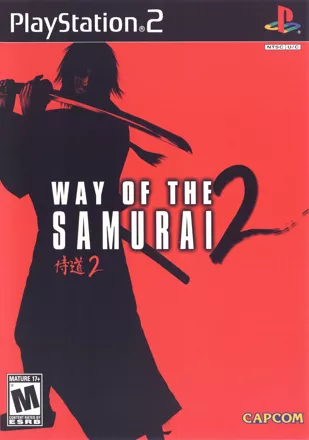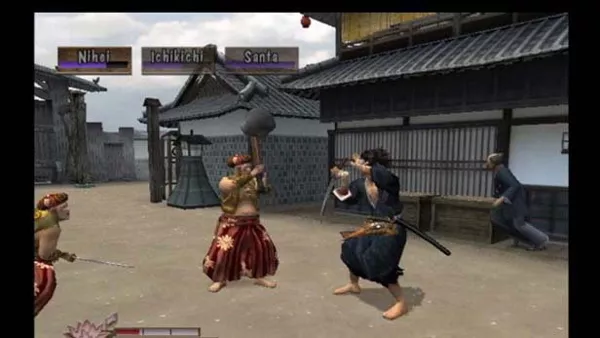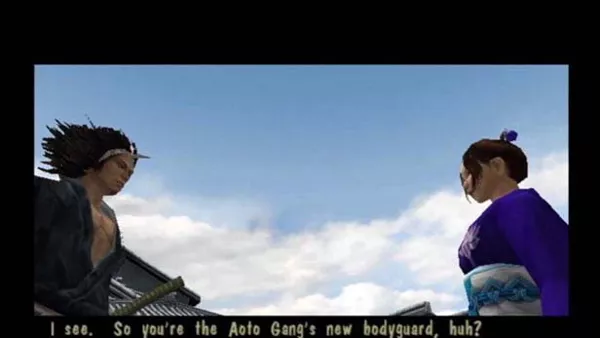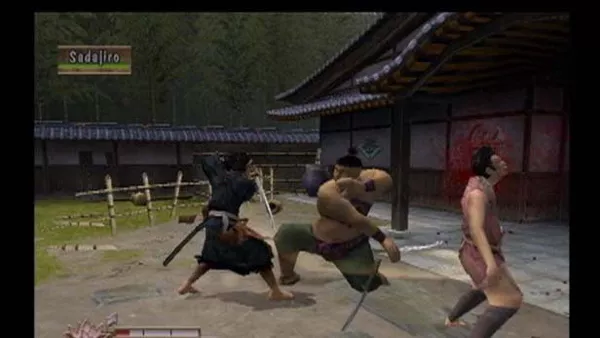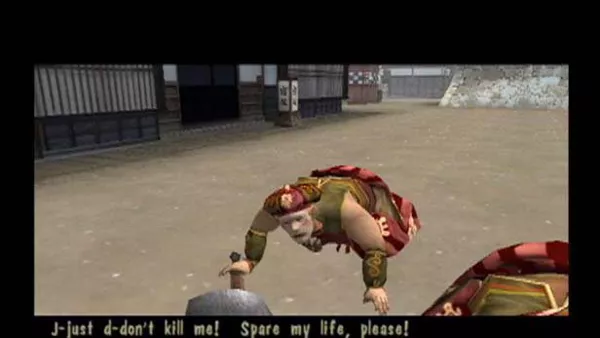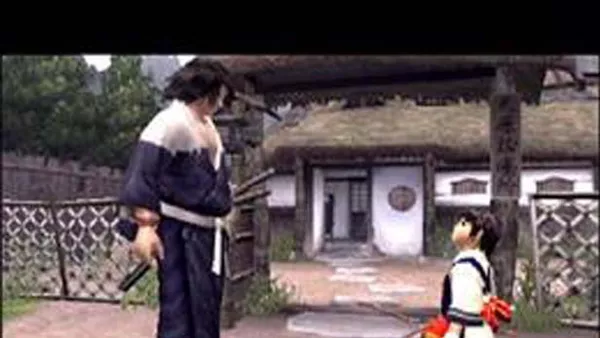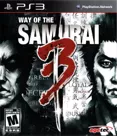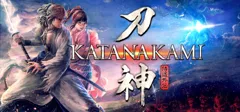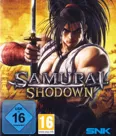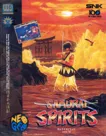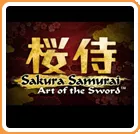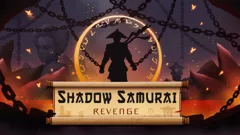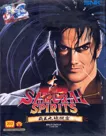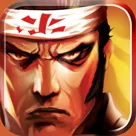Way of the Samurai 2
Description official description
Acquire's second Way of the Samurai game is designed to offer the authentic settings, deep sword-fighting system, and cause-and-effect role-playing found in the original, while boosting the graphics and enhancing the interface. Characters can obtain as many as 60 different swords and, with the proper equipment and practice, perform more than 100 different special moves. Also as in the original, the hero must choose his own path through the plot lines, and the decisions he makes can drastically affect the outcome of the story.
The adventure begins as the player's lone samurai warrior comes upon a small, remote village mired in the midst of large, internal dispute. The traditional village leaders favor fealty to feudalistic powers that are becoming prominent throughout the land, while a group of outlaw rebels, known as the Aoto, vehemently oppose acquiescence to the regional authority. As the main character and hero of the story, the player must bring resolution to this conflict, and peace to the town, in whatever Way he deems best.
There is a realistic day and night cycle and various strategical elements. You can talk to various characters, accept tasks and shop for new items. Decisions influence the relationships with the different groups. There are 60 swords, hammers and clubs to choose from, and you have to keep a variable quality and durability level in mind. You can perform both offensive and defensive moves, and even perform special actions. Swords can be enhanced or upgraded in stores, according to your fighting style.
Spellings
- 侍道2ポータブル - Japanese PSP spelling
- 侍道2 - Japanese spelling
Groups +
Promos
Videos
See any errors or missing info for this game?
You can submit a correction, contribute trivia, add to a game group, add a related site or alternate title.
Credits (PlayStation 2 version)
151 People (136 developers, 15 thanks) · View all
| Planning/Production |
|
| Production Director | |
| Director | |
| Creator | |
| Art Direction | |
| Lead Animator | |
| Main Program | |
| Program | |
| Sound Program Designer | |
| GS Program | |
| Program Coordination | |
| Event Script | |
| Main Designer | |
| Battle Design | |
| Free Scene Design | |
| Planner Coordination | |
| [ full credits ] | |
Reviews
Critics
Average score: 60% (based on 13 ratings)
Players
Average score: 3.4 out of 5 (based on 9 ratings with 1 reviews)
A superior sequel to an already better than average game - that's rare.
The Good
The most amazing thing about this game is that it was released only a year after Way of the Samurai. How often can you expect a good sequel only a year later? And to have that sequel better than the first?
The setting of this game precludes the first, going to the Edo Period, not in the height of the Tokugawa period but in the waning period where the rise of the merchant class was just beginning to blur the place of Samurai in society. The same setting ‘The Seven Samurai’ and ’Yojimbo’ saw.
Let’s get to work:
LET’S TALK GAMEPLAY:
- The sword-fighting and movement mechanics of the first are again used, heavy use of directional buttons to intone movement combined with face buttons to intone attack. The attack types are strong/weak - this does feel accurate to sword fighting.
- Again we see swords that evolve as you use them and unlock moves. This time around you can find/buy scrolls that will give you a random move for that sword. A 'common' sword that has seen a few completions will be a formidable weapon.
- Throws feel more integral to this instalment, from simple aikido trips and rolls to some flamboyant ninjutsu techniques for the 4 or 5 ninja weapons.
- Money has a purpose beyond paying the blacksmith to ‘mail’ a sword to you or improve a blade. There is now a host of items you can purchase, persons you can bribe, and food you can dine on instead of foraging for daikon (radishes) in the wild. Because of this there are now a variety of side missions you can undertake - and these do wonders for the replay value.
- Food actually spoils if left in your inventory for a few days. This is a nice touch.
- You now have an abode to call your own, you can sleep here to pass a phase, you can save from this point, and view a calendar and map to help you keep track of objectives.
- The scenario is slightly longer and certainly more complex. This is a sequel that adds without subtracting - the perfect formula to make ME happy.
LET’S TALK GRAPHICS:
- Released only a year later graphical improvement should not be expected in droves - however the scope of the game, the number of textures and skins for NPC’s as well as the number of costumes and faces for the main character have at least doubled. Add to this many more cut-scenes and I am more than pleased with the up-step.
- The motion capture for the separate fighting styles is impressive! Whereas in the first we explored the Bushido Blade stances with the various katana - high, mid, and low(side) - we add the fencing (sheathed) stance and two-swords style, in addition to more varied moves for each. There are also daggers, jutte, and several styles of ninja weapons.
- Each weapon has a distinctive flourish for unsheathing, more than just flash - this tells much about the style of the weapon.
- The lighting was distinctively better for this second go, as well as more vibrant colours.
LET’S TALK SOUND:
- There is a much improved dialogue (via text) interface this time around, for spoken words we now get full sentences from NPC’s instead of just grunts indicating mood.
- The music is fine. The sound effects are also fine. The death screams are above par.
LET’S TALK STORY:
- Once again it is a tale of moral ambiguity but with four sides instead of 3. You play the part of Yojimbo once more by being either the catalyst or observer to the events played out over a few days.
- The best addition to the story this time is that of San, a mute girl who you either befriend or shrug off as your first action. This innocent girl is very much center to the drug ring/merchant/samurai conflict that plays out. The cut scenes and characters are more humanized and a little less cliché than in the first outing - but I’ve got to say the costume design suffers a little - I miss the Tetsuya Nomura style ‘leather and feathers’ look a few of the ‘hero’ characters were sporting in the first.
- The complexity of the storyline takes multiple (10+) completions to fully appreciate. With the exception of San literally every character has muddled intentions that are hard to judge. The kindly doctor who saves lives is really the one peddling the dope on the streets, the seemingly bloodthirsty yakuza thug is actually the most noble character of the bunch, etc.
- As in the first, the flavour of the Era is captured wonderfully. Although this is easier because the average person has a better take on the ‘Classical Samurai Period’ that Edo is. Heck, the first scene is the ronin (you) crossing into the city over the bridge. How many Ukiyo-e paintings captured the same sentiment?
The Bad
My personal slant on this game is pretty high, so it’s difficult to pick out serious flaws, but there were some aspects that got frustrating.
LET’S TALK GAMEPLAY:
- Watch where you point that thing! It’s a little too easy to find yourself fighting to the death with a friend. If you draw your sword in front of someone they assume you mean it. This aspect of realism in a warrior culture wouldn’t usually draw compliant from me - but if you’re fighting off ninja assassin’s in an alley and get too close to the blacksmith (who is integral to collecting swords in the game, you don’t want him dead) he’ll come after you. There is a feature where you can put away your sword and ‘apologize’, but although this works on police and thugs it doesn’t work on someone who knows they can kill you easily.
- Kicking babies for money. To pick things up you can either pick them up by bending over, or kick them up and catch them. Money and rice-balls I can understand, but in a game where babies are kidnapped and need to be rescued on a regular basis, you find yourself kicking babies up in the air because it’s more convenient. Why not a third ‘stoop and cradle’ animation for this?
- One on one. You can fight a mob of 20 because they only attack one at a time. With honourable Samurai I understand, but ninja never adhered to this. This would have made a nasty surprise for the player and been a memorable moment where the rules were broken.
LET’S TALK GRAPHICS:
- Aphro-samurai? It didn’t make sense since I played this game first and the first game second, but one of the accessories is an aphro. A big, bouncy aphro wig. Sunglasses are fine, a biya (a very large gourd shaped guitar) is fine, but no one is going to want to wear a big fluffy aphro on a Japanese faced samurai. This is a herald to Dona-Dona San from Way of the Samurai 1. It says ’this mysterious item belonged to a famous samurai’. Yeah, but the first game takes place some two hundred years later. Having the sword he’d eventually come to own would have been better.
LET’S TALK SOUND:
- Metal Gear Solid 2 was out by this point, it was possible to have large chunks of spoken dialogue outside cut scenes - it would have been nice to see this.
- Taunting would have been nice (verbal taunting).
LET’S TALK GAMEPLAY:
- We’re talking about a Yakuza gang and there is no gambling mini-game? The gallery function on the main screen was a pleasant approach, but I’d trade that for something to waste time on. I’m not asking for Dragon Quest fishing here.
The Bottom Line
And that’s about it. If you only want to pony up enough to buy one of the two on the PS2 I recommend this one highly. Less of a history lesson, but it’s more of a complete game and there’s more to play with. Is it as in-depth as Kengo with the sword play? No. But it’s got that certain something that Yojimbo had (if you haven’t seen Yojimbo, there’s a movie based on it called ’A Fistful of Dollars’, if you haven’t seen that I feel sorry for you - every badass in every movie since was based on that character) - that feeling of a mysterious stranger who’s motives are unknown.
The story is engrossing, the combat is great, the knowledge that you can just go nuts and kill everyone is reassuring. Don’t count on doing that though, it takes a sword that has seen several completions and numerous upgrades to handle the tougher characters in groups - and an ass-load of dried fish for snacking.
PlayStation 2 · by Kyle Levesque (904) · 2010
Trivia
In 'A Tribute to Acquire', an article in Retro Gamer 240, 24 November 2022, Acquire's Takuma Endo reminiscences the game: "We thought carefully about the first game and decreased the number of possible routes by a bit. The game was modelled after Dejima in Nagasaki."
Analytics
Upgrade to MobyPro to view research rankings and price history! (when applicable)
Related Sites +
-
Way of the Samurai 2
Official Japanese website
Identifiers +
Contribute
Are you familiar with this game? Help document and preserve this entry in video game history! If your contribution is approved, you will earn points and be credited as a contributor.
Contributors to this Entry
Game added by Sciere.
PSP added by Ms. Tea.
Additional contributors: MAT, Ms. Tea, Tim Janssen, DemonikD.
Game added September 6, 2005. Last modified October 6, 2024.


